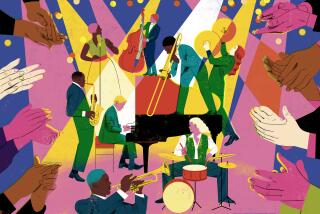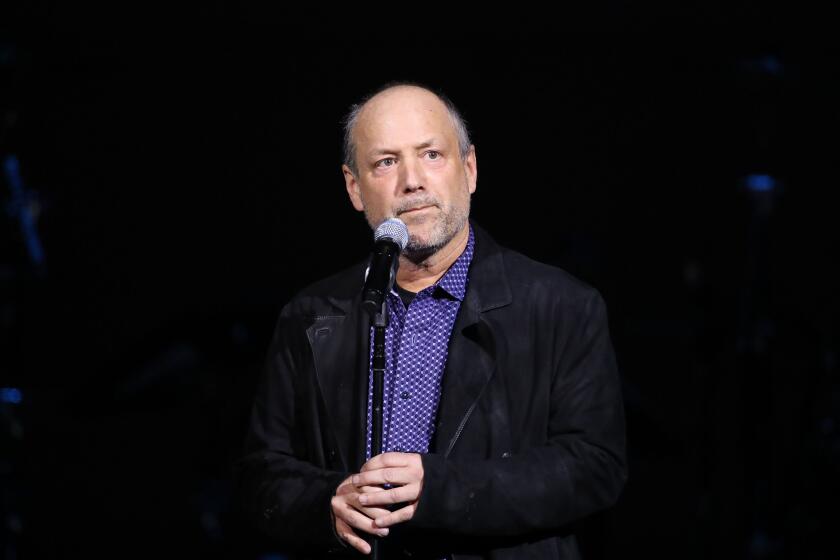Guitarist Charlie Hunter Is the Ace of Bass, and Lead Too
- Share via
SANTA ANA — How does he do it? That’s the big question regarding upstart guitarist Charlie Hunter.
Though Hunter is fast gaining notoriety for playing jazz that’s attractive to the under-30 crowd, it’s his unusual, split-personality technique that really sets him apart. Hunter plays both bass and guitar lines from a single, eight-string instrument.
His quartet’s appearance Friday at the Galaxy Concert Theatre only served to deepen the mystery. Even when you could see him popping bass lines with his thumb while simultaneously finger-plucking funky chordal riffs, you couldn’t help but wonder at his ability to do it.
Playing both bass and lead lines is akin to chewing gum and whistling at the same time. The closest comparison is the jazz organist who taps out bass lines on pedals with his feet while swirling two-handed through a solo on the keys. Only difference is that Hunter does it all with just two hands.
Friday’s show demonstrated how the 28-year-old guitarist has tightened his skills since bursting onto the scene last year with the album “Bing! Bing! Bing!” There were times on the album--and in two 1995 performances at West Hollywood’s House of Blues (one with his trio, one with jazz-funk group T.J. Kirk)--when Hunter’s two roles seemed at cross purposes.
Here, playing tunes from a pair of upcoming releases, Hunter never faltered, supporting himself and the saxophones with spare, tasteful bass lines while constructing involved improvisations that never strayed far from the prevailing rhythmic hook.
Even at the music’s most intense moments, Hunter kept the two roles cleanly separate though complementary. And, like any good accompanist, Hunter’s bass pushed the horns and his own play to greater heights.
Though Hunter’s music has an underlying rhythmic accessibility, the improvisations, especially from the dual saxophones, often push into the outer realms.
Alto saxophonist Calder Spanier called up images of both Hank Crawford and Ornette Coleman as he alternated between avant and funk lines. Tenor saxophonist Ken Brooks often took a tough, John Coltrane-inspired stance as he played with resonant overtones and anguished confessions in the horn’s upper register.
Drummer Scott Amendola kept the music grounded with core beats and plenty of variations. Though he worked mainly in drive and shuffle rhythms, Amendola would back the saxophones with polyrhythmic displays as their solos grew in intensity. He often layered riff against riff as his bandmates harmonized on themes.
Some of the tunes from the forthcoming album--”Ready . . . Set . . . Shango!” (due next month)--were vastly different than the recorded versions. The ballad “Let’s Get Medieval” was played at a titillatingly slow pace that provided plenty of opportunity for accent and variation.
The group also played a trio of Bob Marley tunes--Hunter will record an album of Marley’s music later this month--arranged in a way that made them difficult to recognize.
Hunter’s rewrite of the Beatles’ “Fixing a Hole” emphasized the cartoonish nature of the piece. Throughout the performance, the blend of horns and guitar, which varied in tone from country twang to the whine of a Hammond organ, often made the group seem bigger than it was.
Still, when the music was its most involved, one couldn’t help but look for an invisible fifth player, the one who was turning out those tasty bass lines.
More to Read
The biggest entertainment stories
Get our big stories about Hollywood, film, television, music, arts, culture and more right in your inbox as soon as they publish.
You may occasionally receive promotional content from the Los Angeles Times.







